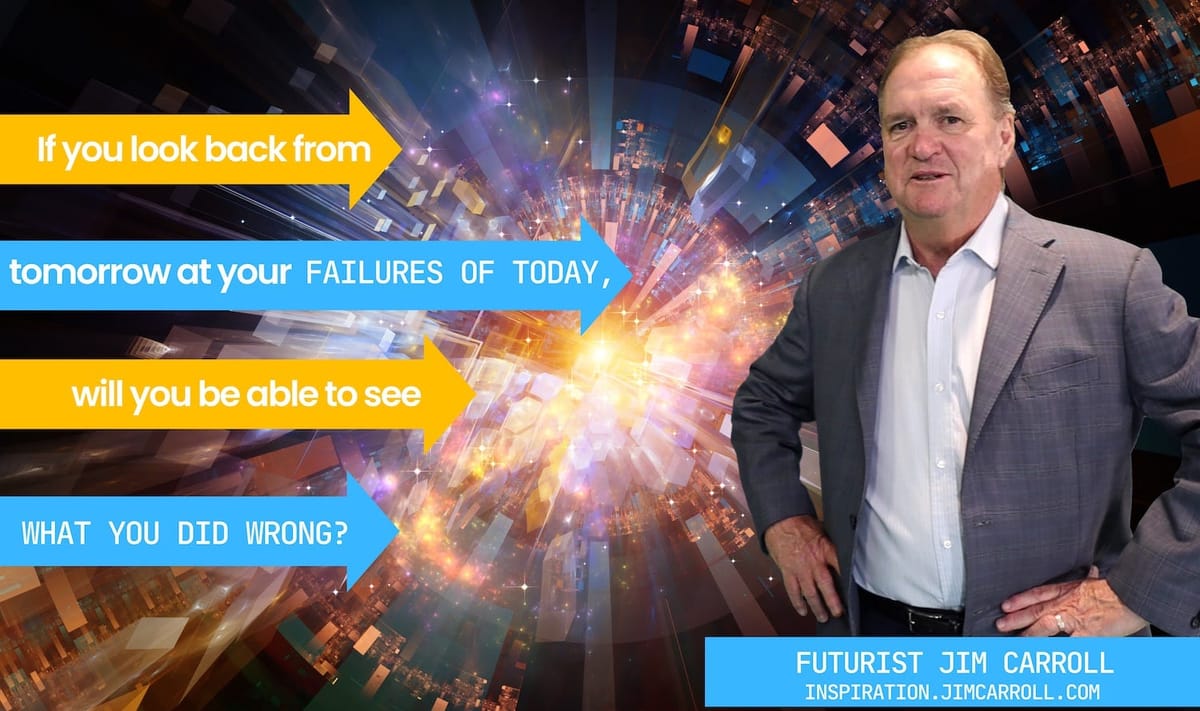You need to have a compelling sense of urgency.
Instead, you might have an astonishing mindset of complacency.
Every event that I do involves an extensive amount of research, careful thinking as to the core message, and usually, several calls with the team that is bringing me in. I had one such call yesterday with a key client, and while we were talking about the potential role of AI (one of my core themes for the keynote),, someone suggested that there were few within their organization that were taking it quite seriously enough.
That's probably a big mistake. While we know that AI is moving forward at a furious pace, we also know that there is little clarity on what to actually do, or where it might take us. But we do know it will have a massive impact. Innovating and transforming in the face of wild uncertainty is our new normal, and when it comes to AI, all we know is that we don't know where we are going - but we are making great time!
The question, in this case, becomes - how can I encourage people to move forward into the future without clarity? One method is to give them that clarity - and so this often involves building a section into my keynote where I look back at today from tomorrow; for example, pretending it's the year 2035, and looking back to today, 2023. What would you see, I'll ask the audience. In other words, you can look forward by looking back.
That idea resonated and will become a structure within my talk for this event.
But then the CEO on the call suggested that what might also be helpful is if I challenge the audience while looking back from tomorrow to today if they could identify what they were doing wrong at this very moment in time. What mistakes were they making right now that held them back from being a full and successful participant in the future?
Whoompf! I like that idea and jotted down the phrase!
Here's what you might see if complacency is at your core - it's the year 2035, and you are looking back at the mistakes you are making right now:
- you learned that things were going to change faster than you thought they would
- the scope of the change was bigger than you expected
- the change that happened came from a direction that you didn't expect
- it involved someone moving faster than you
- they had ideas that were bigger, bolder, and more far-reaching than yours
- their goals were to figure it out as they went, while yours was to come up with some sort of grand, all-encompassing plan
- they actually implemented ideas while you wallowed in indecision
- they didn't let their history of skepticism and cynicism cloud their need for action
- they were prepared to invest, while you were entirely focused on cutting costs
- they corralled the necessary skills to do what needed to be done, while you were busy trimming resources
- they experimented and worked with bleeding-edge technologies while you waited for clarity of direction
- they implemented ideas while you studied potential courses of action
You would be kind of embarrassed and angry with yourself at this moment in time, wouldn't you?
Let me repeat this phrase - with AI, we don't know where we are going, but we are making great time. Clearly, everything that is happening is disruptive, massively transformative, and full of peril and potential. You need a strategy, a plan, and a course of direction, even in the absence of clarity.
Because otherwise, you'll spend all your time in 2035 looking back to 2023 and thinking about the mistakes that you were making today, at this very moment in time.
Futurist Jim Carroll, when talking about the future, will often use a mind hook of looking back from tomorrow to today. It's a great way to get people thinking about what they need to change today to get to a better tomorrow, tomorrow.
Thank you for reading Jim Carroll's Daily Inspiration. This post is public so feel free to share it.

